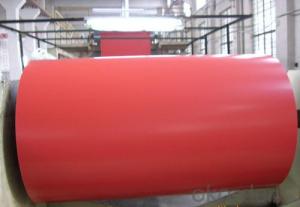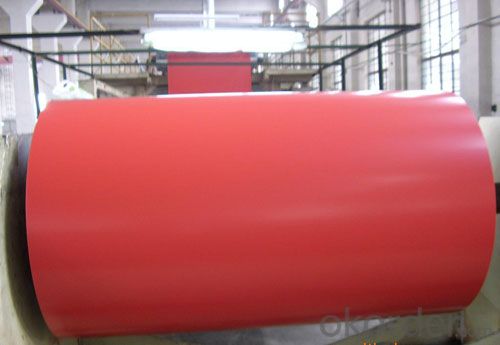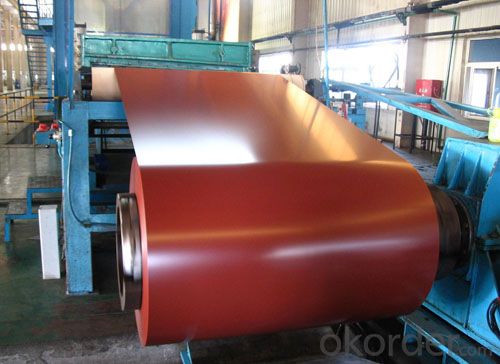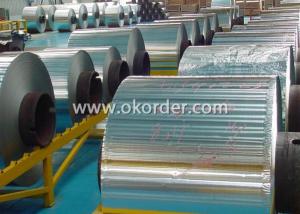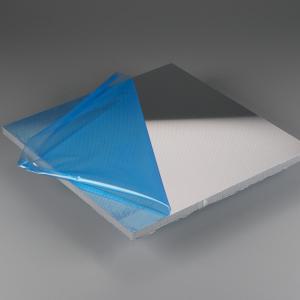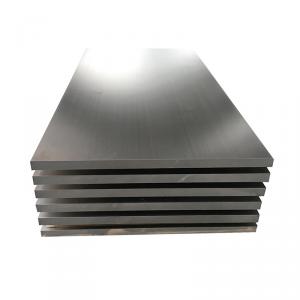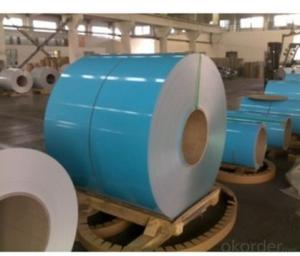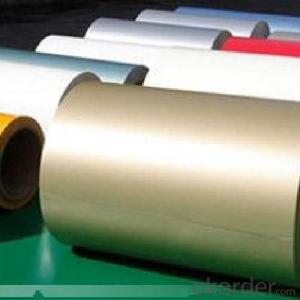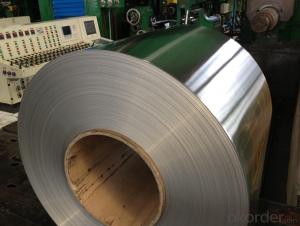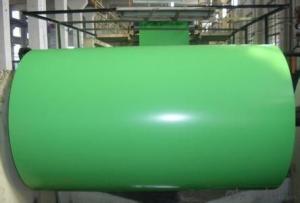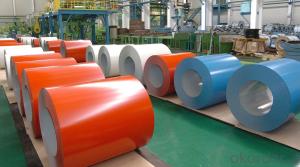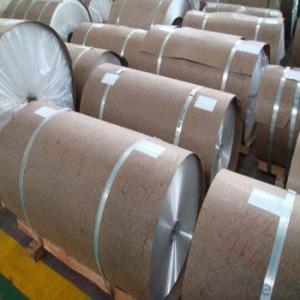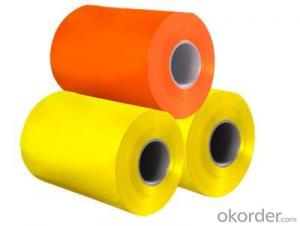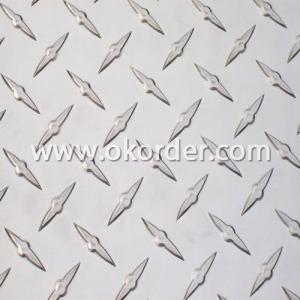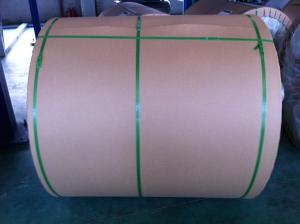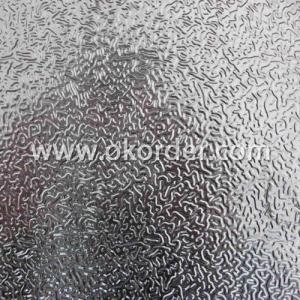Sheets of Aluminum - Painted Aluminium Coil Sheet for Wall Facade
- Loading Port:
- China main port
- Payment Terms:
- TT OR LC
- Min Order Qty:
- 5 m.t
- Supply Capability:
- 5000 m.t/month
OKorder Service Pledge
OKorder Financial Service
You Might Also Like
Specification
1. Description of Painted Aluminium Coil Sheet for Wall Facade
Coated Aluminium Coil/Sheet are of a wide range of colors, which gives wonderful apprearance no matter in residential and commecial constructions of great exhibition centers.
2. Application of Painted Aluminium Coil Sheet for Wall Facade
(1).Interior: wall cladding, ceilings, bathrooms, kitchens and balconies, shutters, doors...
(2).Exterior: wall cladding, facades, roofing, canopies, tunnels,column covers , renovations...
(3).Advertisement: display platforms, signboards, fascia, shop fronts...
3. Feature of Painted Aluminium Coil Sheet for Wall Facade
*Such coil is specially designed to replace aluminum ingot, due to the high export tax of aluminum ingot, the coil has better price than ingot.
*This type of coil can fit customer's remelting furnace just like ingot, no need to make any change to the production line that was previously used for ingot. The standard coil size and weight is very suitable for the feed gate of furnace.
*This type of coil causes less material wastage than ingot when remelted.
*Our coil is made directly from ore, no need to go though the ingot making process, quality is much better than other suppliers who use ingot scrap to make coil.
Be free from Oil Stain, Dent, Inclusion, Scratches, Stain, Oxide Dicoloration, Breaks, Corrosion, Roll Marks, Dirt Streaks and other defect which will interfere with use
4. Certificate:
SGS and ROHS(if client request, paid by client), MTC(plant provided), Certificate of Origin(FORM A, FORM E, CO), Bureau Veritas and SGS (if client request, paid by client), CIQS certificate
5. Image of Painted Aluminium Coil Sheet for Wall Facade
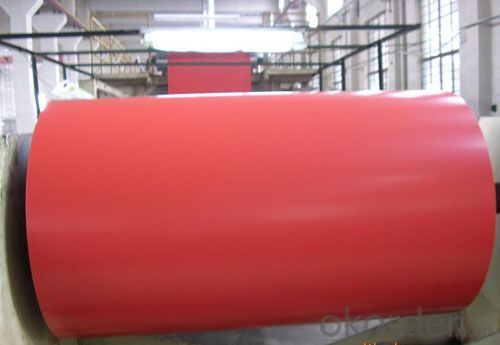
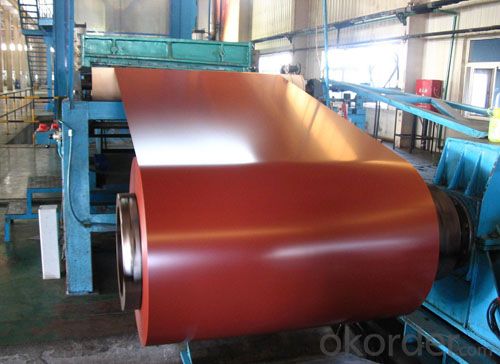
6. Package and shipping of Painted Aluminium Coil Sheet for Wall Facade
eye to Sky
eye to wall
with wood pallet (wooded case also available)
7. FAQ
1) What is the delivery time?
Dpends on actual order, around 20 to 35 days
2)What is the QC system:
We have QC staff of 20 persons and advanced equipment, each production is with MTC traced from Aluminum ingot lot.
3) What market do you mainly sell to?
- Q: How does aluminum sheet perform in high-pressure applications?
- Aluminum sheet performs well in high-pressure applications due to its high strength-to-weight ratio and excellent corrosion resistance. It can withstand elevated pressures without deforming or rupturing, making it a reliable choice for various industries such as aerospace, automotive, and marine.
- Q: Can aluminum sheets be used for food processing conveyors?
- Indeed, food processing conveyors can make use of aluminum sheets. The numerous desirable properties of aluminum render it a favored option for food processing equipment. Its lightweight nature, resistance to corrosion, and exceptional thermal conductivity make aluminum sheets extraordinarily well-suited for the task of facilitating the transportation of food products within the demanding environment of food production. Furthermore, aluminum's ease of cleaning and maintenance further bolsters its appeal as a hygienic choice for food processing applications.
- Q: Can aluminum sheets be used for air ducts?
- Yes, aluminum sheets can be used for air ducts. Aluminum is a commonly used material for air ducts due to its lightweight and durable properties. It is resistant to corrosion, which makes it a suitable choice for HVAC systems. Aluminum sheets are often used to fabricate air ducts as they can be easily bent and shaped to fit the required dimensions. Additionally, aluminum has good thermal conductivity, allowing for efficient heat transfer within the ducts. Overall, using aluminum sheets for air ducts is a practical and effective choice.
- Q: What is the difference between aluminum plate AL1050 and AL1060?
- 1050 and 1060 belong to an aluminum plate, that is, pure aluminum plate, the difference is that the content of aluminum is different. 1050 aluminum content 99.95%, 1060 Aluminum Content 99.60%, material is very close, often can replace the use, the current use is more than 1060 Aluminum plate.
- Q: Are aluminum sheets resistant to corrosion?
- Yes, aluminum sheets are highly resistant to corrosion. Aluminum forms a protective oxide layer on its surface when exposed to air, which prevents further corrosion from occurring. This oxide layer acts as a barrier, protecting the underlying metal from environmental factors such as moisture and corrosive chemicals. Additionally, aluminum has a low tendency to rust, making it a popular choice for various applications where corrosion resistance is crucial, such as in the construction of aircraft, automobiles, and marine vessels. Overall, aluminum sheets are known for their exceptional resistance to corrosion, which contributes to their durability and longevity.
- Q: I have seen some stainless steel rifles that you can basically dunk in water, require no cleaning, etc and perform time after time. If SS is so good why are most weapons made of aluminum parts which is then anodized coated black? If you dunk these weapons in water will they rust? Thanks
- Stainless steel will rust.. It does have small amounts of carbon in it It just takes longer... Than carbon steel to stain Aluminum works for low stress parts ... AR lowers, hand gun frames If the part is stressed or needs wear resistance it generally is made of tool or ordinance grade steel-carbon or stainless
- Q: Are aluminum sheets suitable for use in cryogenic environments?
- Yes, aluminum sheets are suitable for use in cryogenic environments. Aluminum has excellent thermal conductivity, low density, and good mechanical properties at low temperatures, making it an ideal choice for applications in cryogenic environments. Additionally, aluminum has a low coefficient of thermal expansion, which allows it to maintain its structural integrity even under extreme temperature fluctuations.
- Q: How is the thickness of aluminum sheets measured?
- A micrometer is typically utilized to measure the thickness of aluminum sheets. This precision instrument consists of a calibrated screw mechanism featuring a spindle and anvil. To determine the thickness of an aluminum sheet, it is positioned between the spindle and anvil of the micrometer. By turning the screw, pressure is applied to firmly secure the sheet in place. The measurement can then be obtained by reading the scale or digital display on the micrometer. Alternatively, a thickness gauge is commonly employed for this purpose. This gauge employs a set of parallel anvils to measure the sheet's thickness. The sheet is inserted into the gap between the anvils, and the measurement can be obtained by reading the scale or display on the gauge. Both methods yield precise and dependable measurements of aluminum sheet thickness.
- Q: Aluminum siding is essentially maintenence-free, extremelydurable, and is a great insulator, even better than brick. Brickleaks air through the mortar between the bricks, especially in olderhouses that need tuckpointing. My question is, do you feel sidingstill has a declasse connotation, or is it getting more acceptableas the years go on?
- Brick is certainly the most durable if taken care of properly. My second choice is aluminum siding, which is far more durable than vinyl siding any day. Vinyl is simply more affordable, which is why most home have it these days - whoever decided that aluminum siding declasses a home, is full of malarky.
- Q: There are about 200 holes on the aluminum plate to be machined. There are 100 M12 thread holes, and the rest are 15MM through holes. The tolerance is +0.02. Seeking detailed processing technology, is the first hole or first processing plane, how to control the amount of deformation of the plate, if the milling process can not guarantee flatness, on the grinder, then the 2 surfaces to stay 2MM margin? Are there any 15MM through holes that can be used to maintain tolerances, or do they need to be boring?. Great God advice, the best detail. Aluminum so much done before, no experience, if it does it scrapped.
- The thickness of 2 to 1. fly in place stress to ensure the flatness of the fitter leveling 0.13 more than the Xicheng pay attention to the protection of the appearance of 4 to ensure the flatness of the fabricated fitter. - this thing must not need to be so high, 100 M12 threaded holes, you still press the map to ensure that ah? Such a large plate deformation, 2 millimeters below the hole can be pressed to do
Send your message to us
Sheets of Aluminum - Painted Aluminium Coil Sheet for Wall Facade
- Loading Port:
- China main port
- Payment Terms:
- TT OR LC
- Min Order Qty:
- 5 m.t
- Supply Capability:
- 5000 m.t/month
OKorder Service Pledge
OKorder Financial Service
Similar products
Hot products
Hot Searches
Related keywords
